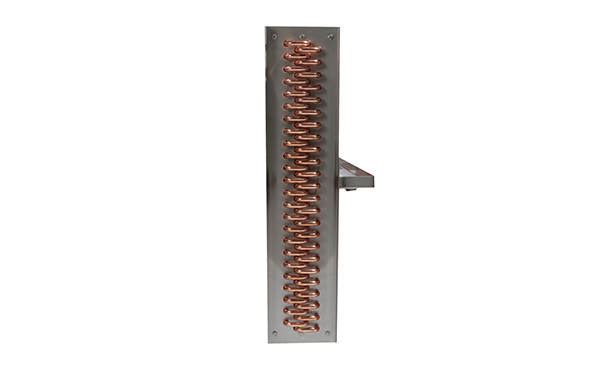FLUID COILS

FLUID COILS
CAPABILITIES OVERVIEW
Vent and Drain connections are supplied on all fluid coils, unless specified otherwise. The standard connection is a ¼” FPT copper bushing located on the face of the headers. We recognize this may not be the optimum location for all coils, so we offer a variety of connections and locations based on overall coil geometry and customer needs. Vent and drain connections can be placed in the top and bottom of the headers, inside or outside the headers, or even in the connections. These optional connection locations facilitate proper venting and draining and, therefore, reduce the installation and maintenance cost over the life of the coil.
Turbulators are available to enhance the overall heat transfer of the coil by inducing more fluid turbulence inside the tubes. These brass, spiral, turbulators are typically applied in low-flow applications, or for heavily-viscous fluids. While initial cost and increased pressure drop are to be considered, they are a cost-effective solution for many applications.
Integral intermediate drain pans are an option for those applications where a single coil is required in lieu of multiple stacked coils. This feature incorporates an intermediate drain pan in the fin pack of the coil, allowing the coil to be installed as a single unit.
In cooling applications it is a common occurrence to have leaving air conditions that approach 100 percent saturation. Under such conditions, water is likely to condense on filters, equipment, or in the duct work, which can lead to premature equipment failure and mold formation issues. To help avoid condensation forming downstream of cooling coils, it is necessary to de-saturate the leaving air. Our SureDri coil can accomplish this in one coil. The SureDri coil consists of two cores: the primary cooling core and a re-heating core. By properly designing the primary core, it is possible to have the leaving fluid temperature sufficiently above the leaving air temperature. This “warmer” fluid is then passed through the re-heat coil positioned on the outlet air side of the primary core, to slightly increase the air temperature. The result is cool air leaving the coil that has a lower relative humidity and is less likely to condense downstream.